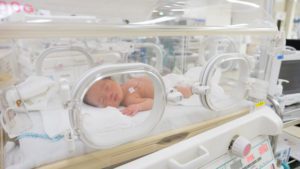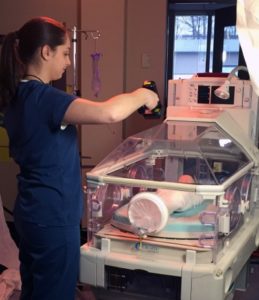Effective January 1, 2019, all Joint Commission-accredited hospitals and critical access hospitals that provide labor and delivery services will have a new element of performance. This new requirement at National Patient Safety Goal (NPSG.01.01.01) is designed to improve the quality and safety of care for newborns during their hospital stay following delivery. Since babies cannot speak, can sometimes look similar, and can share a similar naming convention, the Joint Commission created a new requirement with the goal of providing more distinguishable naming methods for this vulnerable population.
The new requirement enforces facilities to use at least two patient identifiers when providing care, treatment, and services.
- Distinct naming systems using the mother’s first and last names and the newborn’s gender (for example, “Smith, Judy Girl” or “Smith, Judy Girl A” and “Smith, Judy Girl B” for multiples.
- Standardized practices for identification banding (for example, two body-site identification and barcoding).
- Establishing identification-specific communication tools among staff (for example, visually alerting staff with signage noting newborns with similar names).
Learn more about the requirements, rationale, and references – download the R3 Report.
Make Patient Identification Easy with RestEasy RFID!
RestEasy RFID by RMS Omega is a solution that can help healthcare facilities comply with the new Joint Commission mandate. It will ensure patient identification while leaving the patient undisturbed. With RFID technology, nurses can quickly scan and identify infant patients without disturbing them. See, RFID does not require a line of sight, so nurses are able to collect patient data through an incubator, blankets, clothing, or drapes.
 The components of RestEasy RFID include an RFID reader, ankle bands, and an RFID printer. No additional software is needed, making installation easy!
The components of RestEasy RFID include an RFID reader, ankle bands, and an RFID printer. No additional software is needed, making installation easy!
Besides complying with the Joint Commission’s mandate, healthcare facilities have found that RestEasy RFID has many benefits. Not disturbing the patient is crucial. Incubators are often temperature-controlled or light regulated. Since no line of sight is necessary to collect patient data, neither of those aspects will be disturbed. In addition to leaving the patient undisturbed, the patient’s eyes are also protected. Many facilities currently use barcode technology for patient identification, and many barcode scanners use lasers that can cause harm to a young patient’s eyes.